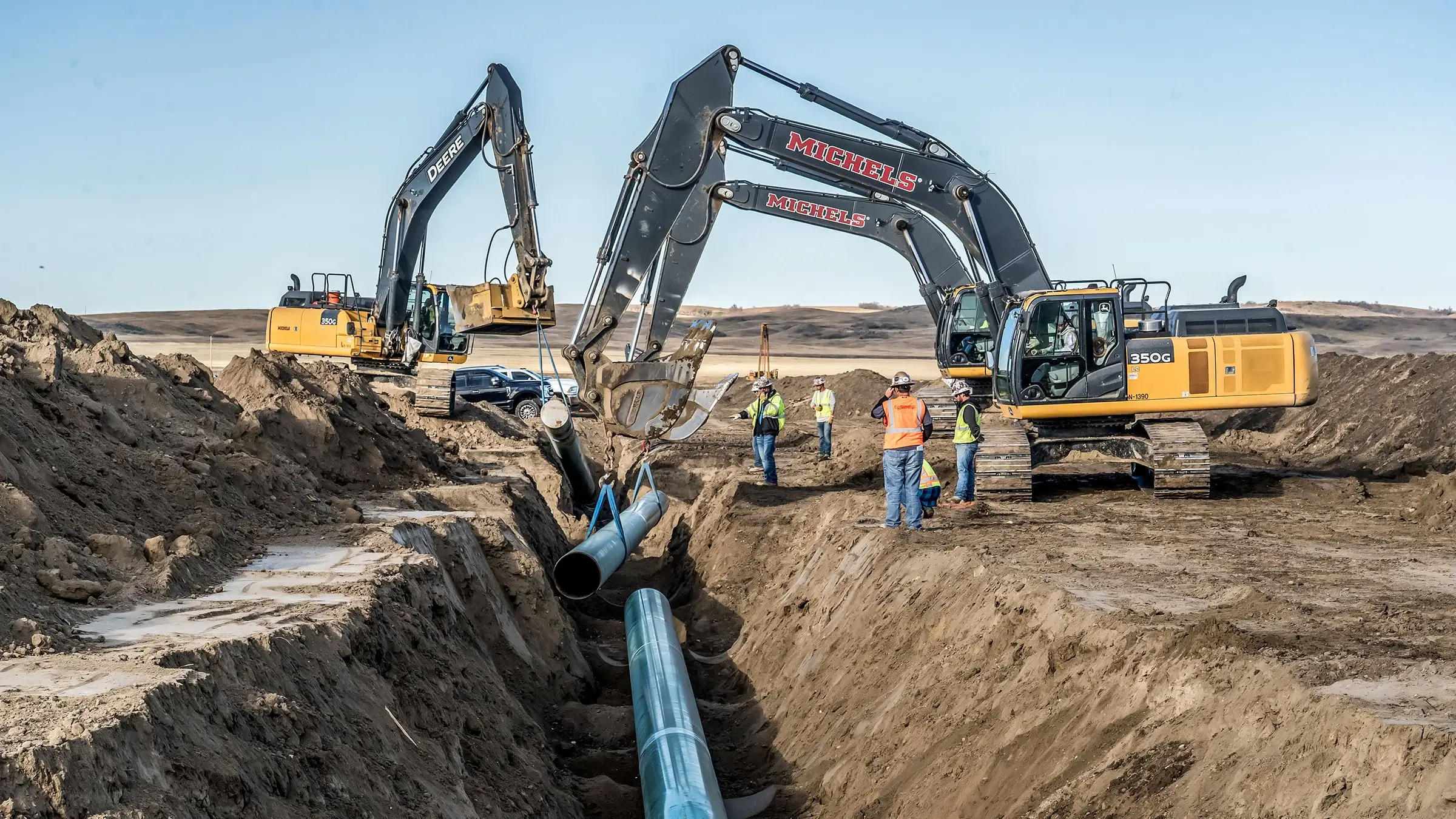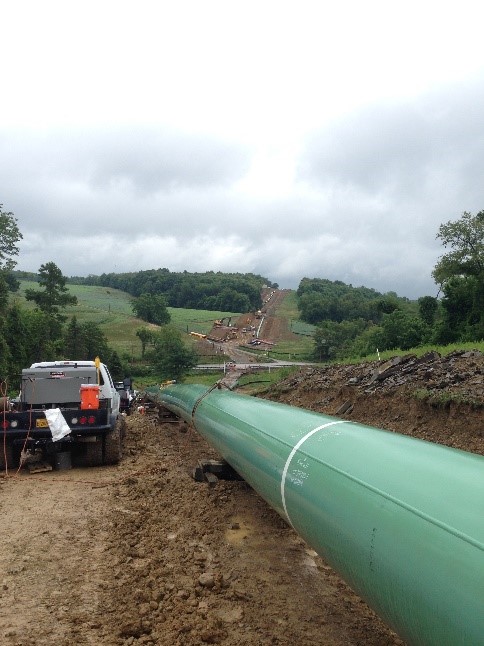Industry Breakdown of Creek Pipe reviews and Customer Experiences
The Significance of Pipeline Construction: Exploring the Providers Provided in the Sector
Pipeline construction is an important component of modern-day infrastructure. It helps with the transport of essential sources like oil, gas, and water. The industry includes numerous solutions, including planning, website preparation, and installation. Each phase requires precision and adherence to safety criteria. As communities depend on these systems for their incomes, understanding the details of pipeline construction discloses its significance and possible obstacles. What aspects affect the success of these projects?
Overview of Pipeline Construction Services
Pipeline construction services include a series of customized tasks designed to assist in the installation of pipelines for transporting various substances, consisting of oil, gas, and water. These solutions typically consist of site preparation, excavation, installment of pipe sections, and backfilling. Proficient labor and innovative equipment are fundamental for ensuring each phase is performed with precision and safety.Safety methods are paramount, as these jobs frequently include collaborating with harmful materials and in tough atmospheres. Quality control actions identify that the pipelines fulfill sector requirements and guidelines. Additionally, the services might include trenchless modern technology, which minimizes surface area disruption.Environmental factors to consider play a considerable duty in pipeline construction, needing analyses and reductions to protect surrounding ecological communities. On the whole, pipeline construction services are important for developing the infrastructure needed for energy and water distribution, sustaining both financial development and social demands.
Preparation and Design in Pipeline Projects
Efficient preparation and layout are critical components of effective pipe projects, guaranteeing that all aspects are carefully addressed prior to construction begins. This phase includes thorough expediency research studies that evaluate the technical, economic, and environmental factors influencing the job. Designers and designers team up to create comprehensive plans that detail the pipe route, products, and construction techniques, aligning with regulative requirements and sector standards.Advanced software and modeling methods are often employed to simulate numerous circumstances, enhancing the design for efficiency and security. Environmental effect analyses are conducted to mitigate potential injury to environments and neighborhoods, reflecting a dedication to sustainable practices. In addition, stakeholder interaction is important, promoting interaction and addressing problems from affected parties. Ultimately, effective planning and design established the foundation for a pipeline job, lessening risks and guaranteeing a streamlined construction process, ultimately adding to the total success of the operation.
Website Prep Work and Excavation
Thorough site prep work and excavation are vital steps in the pipeline construction process. This stage involves a detailed evaluation of the land where the pipe will be installed. Project groups conduct studies to recognize dirt types, topography, and existing utility lines to guarantee a risk-free and efficient excavation. Correct website preparation decreases environmental influence and promotes smoother construction operations.Excavation complies with, where heavy equipment is employed to remove dirt and rock, developing a trench that meets the defined depth and size for the pipeline. This procedure should stick to security policies and environmental standards to stop damages to surrounding ecosystems.Additionally, erosion control measures are implemented to support the site during and after excavation. Effective site prep work and excavation contribute greatly to the total success of pipeline jobs, laying a strong foundation for the subsequent phases of construction.
Pipeline Installation Methods
Pipeline installation strategies are necessary for the effective implementation of framework jobs. Two noticeable methods include trenchless technology, which minimizes surface interruption, and the open-cut excavation process, understood for its straightforward approach. Each technique uses unique advantages and considerations depending upon job needs and environmental variables.
Trenchless Innovation Techniques
While traditional approaches of pipe installment frequently include comprehensive excavation, trenchless technology techniques provide a more effective and ecologically pleasant choice. These innovative methods, such as horizontal directional exploration and pipeline bursting, reduce surface area disruption by permitting for the installation of pipelines without considerable excavating. This not only minimizes the environmental influence but also substantially reduces labor and reconstruction costs. Trenchless approaches help with the installment of pipes in city locations where typical excavation would be unwise or destructive to existing framework. Additionally, these methods can fit different soil kinds and problems, making them flexible remedies for pipe construction. Eventually, trenchless technology represents a significant innovation in the pipeline sector, advertising sustainability and functional effectiveness.

Open-Cut Excavation Refine
Open-cut excavation remains an essential method in pipeline installment, defined by the straight excavation of a trench to lay pipes. This approach involves getting rid of soil and other materials to produce a trench of enough depth and size, permitting for the placement of pipelines at the required quality. Open-cut excavation is often preferred for its cost-effectiveness and simplicity, specifically in locations with secure dirt problems. Nevertheless, it can disrupt surface area activities and requires mindful preparation to manage traffic and environmental influences. Safety and security measures must be applied to secure employees and nearby infrastructure throughout the excavation process. Overall, while open-cut excavation may not be appropriate for all surfaces, it remains a commonly made use of method in pipeline construction.
Evaluating and Quality Guarantee
Testing and high quality assurance are vital components in pipe construction, guaranteeing that installments satisfy well-known safety and security criteria and efficiency requirements. Various examination techniques and approaches are employed to examine worldly top quality and adherence to regulatory compliance. This organized strategy assists identify prospective concerns before they intensify, protecting the stability of the pipe system.

Examination Techniques and Approaches
Inspection methods and methods are vital elements in guaranteeing the integrity and safety of pipeline construction. Various strategies, consisting of aesthetic evaluations, ultrasonic screening, and radiographic exams, are used to detect flaws and validate quality. Visual evaluations enable the identification of surface abnormalities, while ultrasonic testing utilizes sound waves to examine wall surface thickness and situate defects internally. Radiographic exams entail X-rays or gamma rays to produce pictures of the pipe's structure, revealing covert issues. Additionally, stress testing is carried out to review the pipe's honesty image source under operational problems. These techniques jointly contribute to a comprehensive understanding of the pipeline's condition, enabling prompt upkeep decisions and ensuring conformity with industry standards. Reliable assessment is crucial for stopping failures and promoting long-lasting operational safety and security.
Safety And Security Specifications Conformity
Making certain conformity with security criteria is critical in pipeline construction, as it straight impacts the task's general quality and integrity. Complying with established policies and guidelines warranties that construction practices minimize risks related to pipe installation and procedure. Creek Pipe reviews. Rigorous screening procedures, including non-destructive screening and pressure analyses, are vital in confirming that pipes can endure the operational stresses they will certainly encounter. Quality control steps are additionally important, as they develop a structure for consistent monitoring and evaluation throughout the construction process. By focusing on safety requirements conformity, companies not just protect workers and the setting but likewise boost the integrity of the pipeline, inevitably resulting in lasting operational success and public count on the framework
Product Quality Examination
Material high quality analysis plays a considerable function in the total honesty of pipeline construction. This process entails rigorous testing and quality control actions to guarantee that materials satisfy market requirements and requirements. Numerous examinations, consisting of tensile strength, corrosion resistance, and weld stability analyses, are carried out to recognize any potential weaknesses. An extensive analysis not only guarantees the performance of the pipeline but likewise improves security and durability over its lifespan. Furthermore, executing quality assurance procedures assists alleviate dangers related to material failures, which can lead to pricey repairs and ecological risks. By prioritizing worldly top quality analysis, companies can assure conformity with regulative requirements while fostering self-confidence amongst stakeholders in the dependability of their pipe systems.
Repair And Maintenance Providers
Repair and maintenance solutions play an essential duty in the longevity and performance of pipe systems. These services incorporate routine assessments, troubleshooting, and rehabilitative activities to address wear and tear, leaks, and various other issues that might occur over time. Experienced professionals use advanced modern technologies such as ultrasonic testing and clever pigging to keep an eye on pipeline stability, guaranteeing that any kind of prospective troubles are identified early.Additionally, upkeep programs typically consist of arranged preventive procedures designed to improve system reliability and decrease the likelihood of unanticipated failures. Repair solutions may entail the replacement of broken sections, securing leaks, or employing trenchless innovation for marginal disruption.
Environmental Conformity and Safety Steps
Pipeline systems not just require continuous repair and maintenance to operate efficiently however additionally must comply with rigorous environmental compliance and precaution. These guidelines are essential for read this minimizing environmental influence and guaranteeing public security. Firms in the pipe construction industry execute detailed ecological assessments before project initiation, determining possible threats to wildlife and ecosystems.Furthermore, adherence to safety methods protects workers and surrounding neighborhoods. This includes routine training on emergency reaction and spill avoidance techniques.To preserve conformity, markets use checking technologies to discover leaks and other anomalies in real-time. Environmental management plans are frequently developed to outline steps for attending to unpredicted concerns throughout construction.Ultimately, rigorous adherence to environmental compliance and safety and security actions not just meets legal responsibilities but also cultivates lasting methods within the sector, advertising an equilibrium between infrastructure growth and ecological stewardship.
Often Asked Questions
What Career Opportunities Are Offered in Pipeline Construction?
Profession opportunities in pipe construction include roles such as task supervisors, engineers, welders, and safety inspectors. These positions call for diverse skills, offering paths for growth in an essential field of infrastructure growth and energy distribution.

Just How Do Pipeline Projects Effect Citizen Communities?
Pipeline jobs significantly influence local areas by influencing financial development, offering job possibilities, and improving infrastructure. They may additionally elevate worries concerning environmental impacts, land usage, and prospective disturbances to neighborhood communication and all-natural communities.
What Modern technology Is Made Use Of in Modern Pipeline Construction?
Modern pipeline construction uses innovative technologies such as GIS for visit this web-site mapping, drones for airborne surveys, and automated welding systems to improve performance, safety and security, and precision, eventually promoting the efficient transport of sources throughout various terrains. Creek Pipe Texas oilfield.
Exactly How Are Pipeline Construction Expenses Approximated?
Pipeline construction expenses are estimated through detailed assessments of materials, labor, equipment, and regulatory requirements. Factors like surface, task dimension, and ecological factors to consider additionally substantially affect the general budget plan and monetary planning for construction.
What Are the Largest Challenges in Pipeline Construction Projects?
The biggest obstacles in pipe construction jobs include regulatory conformity, ecological problems, logistical problems, protecting funding, and managing labor scarcities. Each aspect can considerably influence timelines and spending plans, making complex the general execution of the task.